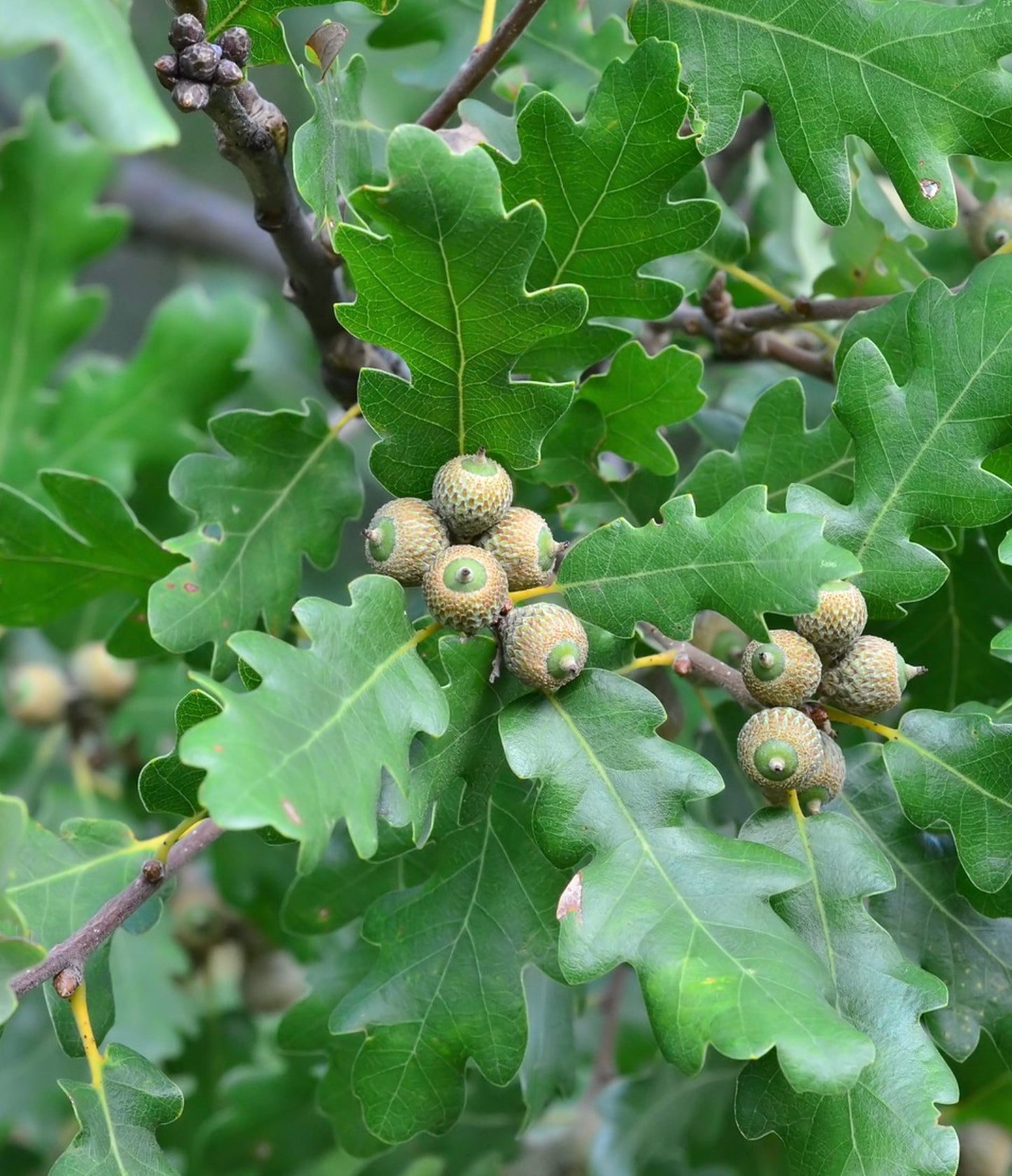- Catalogue Plants
Quercus petraea
Quercus petraea
Couldn't load pickup availability
Plant Description
Quercus petraea, commonly known as sessile oak or durmast oak, is a prominent deciduous tree species native to Europe. It is highly valued for its strong and durable wood, as well as its ecological importance in forest ecosystems.
Appearance:
- Size: Quercus petraea typically grows to a height of 20-40 meters (65-130 feet), with a rounded crown and sturdy branches.
- Leaves: The leaves are alternate, simple, and oval-shaped with smooth edges. They are dark green and glossy on the upper surface, turning yellow-brown in autumn before falling.
- Bark: The bark is dark grey and deeply fissured, providing texture and character to the tree's trunk.
- Acorns: The tree produces acorns that are egg-shaped and sit directly on the branches without stalks. They mature in approximately 18 months.
Habitat and Range:
- Quercus petraea is native to various parts of Europe, including the British Isles, France, Germany, and Eastern Europe.
- It thrives in a range of habitats, from lowland forests to mountainous regions, and prefers well-drained soils.
Cultivation:
1. Location:
- Plant Quercus petraea in a location that receives full sun to partial shade.
- Ensure the site has well-drained soil, as sessile oak prefers sandy or loamy soils but can tolerate various soil types.
2. Soil:
- Provide moderately fertile soil with good drainage for optimal growth. Quercus petraea is adaptable to different soil types but prefers slightly acidic to neutral soils.
- Avoid planting in areas prone to waterlogging, as this can lead to root rot.
3. Watering:
- Water young trees regularly, especially during dry spells, to promote healthy root development.
- Once established, sessile oak is relatively drought-tolerant but benefits from occasional watering during prolonged dry periods.
4. Pruning:
- Prune Quercus petraea minimally, mainly to remove dead, damaged, or crossing branches.
- Pruning is best done during the dormant season to minimize stress on the tree.
5. Fertilization:
- Apply a balanced fertilizer in early spring to promote vigorous growth, particularly for young trees or those growing in nutrient-poor soils.
6. Pest and Disease Management:
- Quercus petraea is generally resistant to pests and diseases. However, occasional issues such as oak wilt or powdery mildew may occur.
- Monitor the tree regularly for signs of pests or diseases, and take appropriate action if necessary.
7. Mulching:
- Apply a layer of organic mulch around the base of the tree to conserve soil moisture, suppress weed growth, and improve soil structure.
- Keep the mulch a few inches away from the trunk to prevent moisture-related issues.
Quercus petraea, or sessile oak, is a magnificent tree species with both practical and ecological significance. By following these cultivation tips, you can successfully grow and maintain sessile oak trees, enhancing the beauty and biodiversity of your landscape.
IMPORTANT: Please be aware that picture 1 show adult plant not for sale, the offer is for a plant in the dimension indicated product description.
Botanical family: Fagaceae
Botanical genus: Quercus
Botanical species: Quercus petraea
SKU:BA-2050-S
Cultivation
Cultivation
Info and Disclaimers
Info and Disclaimers
Plant Height:
Plant Diameter:
Pot Size:
Grafted/Not Grafted:
Disclaimer: Be aware that most plants change across seasons. If present foliage, could have been fallen or change in its color.


